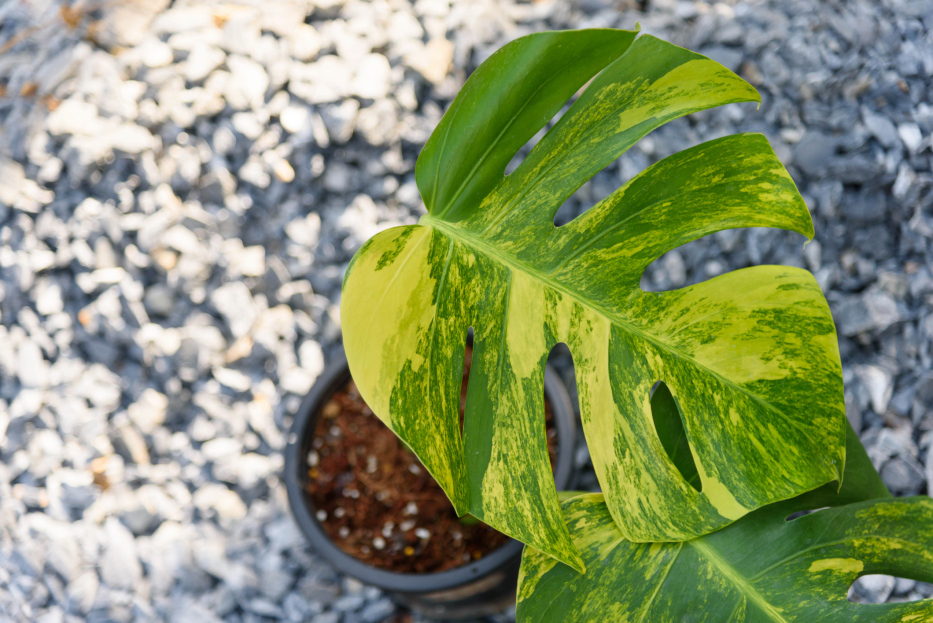
Monstera Aurea is a stunning and rare variety of Monstera deliciosa known for its striking yellow variegation. Its vibrant green leaves are streaked and splashed with golden hues, making it a highly sought-after plant among collectors. While Monstera Aurea requires similar care to other Monsteras, its variegation makes it slightly more delicate and in need of consistent care. Here’s everything you need to know to keep your Monstera Aurea thriving.
To maintain its beautiful yellow variegation, Monstera Aurea needs bright, indirect light. Too much direct sunlight can scorch its leaves, while too little light may cause the variegation to fade. A spot near an east or south-facing window with filtered light is ideal. If natural light is insufficient, consider using a grow light to maintain vibrant foliage.
Like most Monsteras, Monstera Aurea prefers a moderate watering routine. Water when the top 2–3 inches of soil feel dry. Be careful not to overwater, as its roots are susceptible to rot. Use well-draining soil and a pot with drainage holes to prevent water from accumulating at the bottom. During winter, reduce your watering frequency as the plant’s growth slows down.
A well-draining, airy soil mix is crucial for Monstera Aurea. A combination of potting soil, orchid bark, perlite, and coconut coir works well to retain some moisture while allowing excess water to drain. Repot every 1–2 years or when the plant outgrows its container.
As a tropical plant, Monstera Aurea thrives in warm temperatures between 65–85°F (18–29°C). Avoid exposing it to cold drafts or temperatures below 55°F (13°C). It also requires high humidity levels (60% or higher) to support healthy growth and prevent crispy leaf edges. Using a humidifier or placing the plant near a pebble tray with water can help maintain the right humidity.
Feed your Monstera Aurea a balanced liquid fertilizer every 4–6 weeks during the growing season (spring and summer). A fertilizer with added calcium and magnesium can help support strong growth. Reduce feeding during the fall and winter months when growth slows down.
As Monstera Aurea matures, it will develop large, fenestrated leaves that may require support. Use a moss pole or trellis to encourage upward growth and stronger stems. Prune any yellowing or damaged leaves to promote new growth and maintain a tidy appearance.
Monstera Aurea can be propagated through stem cuttings. To do this:
No, Monstera Aurea is toxic to pets and humans if ingested due to the presence of calcium oxalate crystals. Keep it out of reach of pets and children.
With the right care, Monstera Aurea can become a striking centerpiece in your home. Its bold yellow variegation and dramatic foliage make it a rewarding plant to grow, and with proper lighting, watering, and humidity, it will continue to thrive for years to come.